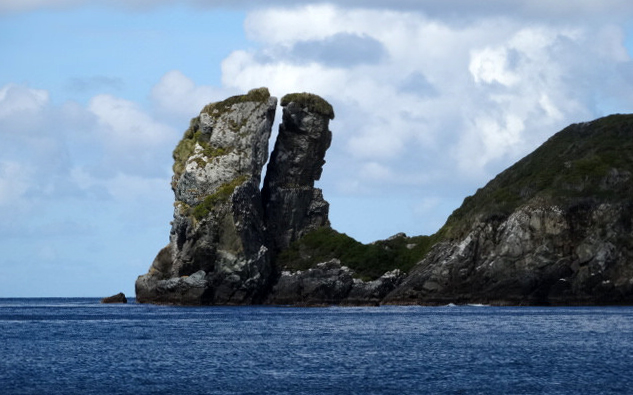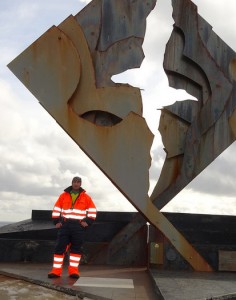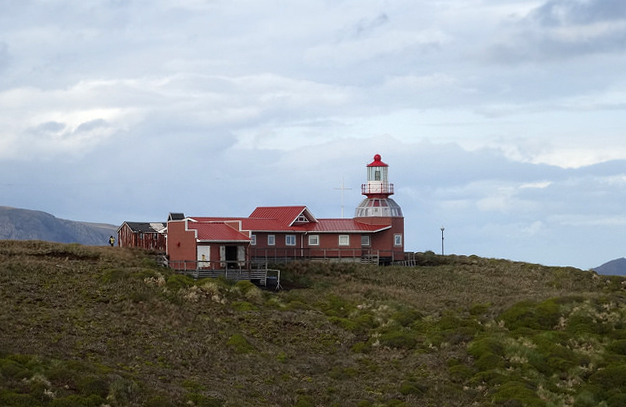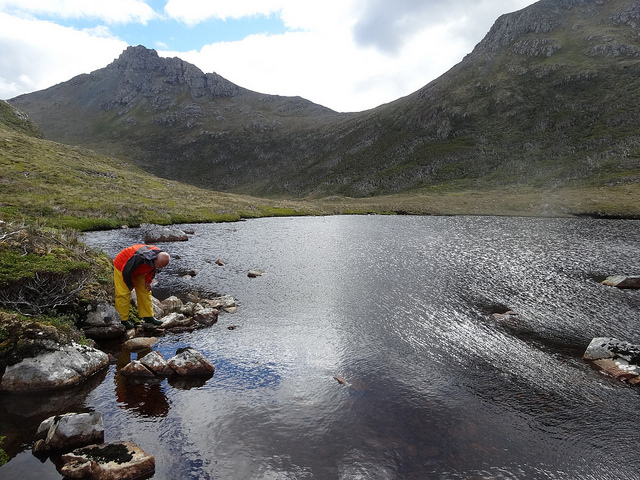From the Field: Bill Buck in Cape Horn 2014, Part 10
Posted in Travelogue on April 28, 2014 by Bill Buck
William R. Buck, Ph.D., is the Mary Flagler Cary Curator of Botany at The New York Botanical Garden. Every January for the last three years, Dr. Buck, a moss specialist, and a team of colleagues have journeyed to the Cape Horn region at the southern tip of South America to document the area’s rich diversity of mosses and search for new species.
January 22, 2014; Fondeadero Hyde, Isla Wollaston, Chile (55°44’S, 67°27.5’W)

Yesterday, the weather was surprisingly good—no rain the entire day. The problem was that it allowed us to hit three sites, meaning we fell behind on our work in the drying room. The ship started up at 4 a.m. for a bright and early arrival at our island du jour: Isla Deceit. I had never collected there, meaning I needed to collect every species of moss that I came across to document distribution.
Though a stream passing alongside an abandoned homestead created a picturesque scene, Isla Deceit’s forest was mostly bare of mosses. The rocky shore was more profitable, however. In a group with such diverse interests, we’re able to scout many different habitats, ideally uncovering as much of the local diversity as possible. This also means that there is a certain amount of privacy in the field, something lacking on the ship.
I relish these moments by myself. They allow me to collect at my own pace—that of a snail—and get a feel for the local bryodiversity, the assortment of bryophytes, or mosses. I can easily lose track of time as I gaze through my hand lens for minutes at a time at some small sod I’ve picked up. If I choose not to collect something, I always replace my divot. For me it’s a combination of karma—not to take life, even that of a moss—and respect for the organisms that I’ve spent almost 40 years studying. They have been good to me.

Upon our return to the ship, it was time for lunch. As I’m sure you’ve noticed, it really increases morale when the food is good and servings ample. John Brinda, with his propensity for seasickness, chose to eat al fresco as we motored to our next collecting site.
Our destination was uncertain, so I went up to the bridge to get an idea of where we were. Pointing at a cove I noticed at the northeast end of Isla Deceit, near the base of Cape Austin (55°49’S, 67°06’W), I asked the captain if it was a possible anchorage. He soon turned the ship, and before long we were set ashore.
A small stream wound through the Magellanic tundra here. Although the previous site had no bryophytes growing on its coastal shrubs, here the barberry hosted numerous species of mosses, mostly in the genus Ulota. The lure of the mosses was too much to resist. A large species of the genus Brachythecium sprawled beneath the stems of the herbaceous vegetation.
It was 6 p.m. by the time we returned to the ship. I was told earlier in the day that if weather permitted, we would go to Isla Hornos, where Cape Horn (55°58’S, 67°13’W) is located. With the seas as calm as they were likely to get, that’s where we headed next. I have collected at least three times on this small island, and with two large sacks of wet specimens already in hand, I was glad to be a tourist. The albatross sculpture located there is one of my favorite pieces of art, and I welcomed one last opportunity to see it. None of the other members of the group had been there before, though everyone has heard of Cape Horn.
The military family that lives on the island and staffs its lighthouse came down to welcome us. The husband wore his dress uniform and was accompanied by his wife and son. We learned they had only arrived here a month earlier, and the novelty of visitors had not worn off. The crew of the Doña Pilar also came ashore; incredibly, none had ever visited this historic site.

Although bleak, these outposts are desirable for military personnel: they get to live with their family, with no officer in sight, and receive higher pay than usual. All of their needs are supplied by the military, allowing them to save almost the entire year’s salary. For me it was a bittersweet diversion. I knew it would be my last visit to this place.
As the crew and I boarded the zodiac boat for our return to the ship, the skies opened up to pelt us with sleet. The others huddled in their rain gear, but I took it as a sign and spread my arms in welcome. The storm was gone as quickly as it had come. We had dinner on the ship as we made our way back to our anchorage of the past two nights. Tonight’s menu offered an appetizer of king crab followed by fried fish and boiled potatoes.
It was after 10 p.m. by the time we dropped anchor. All of us had specimens to process, making it a late night. A dark cloud approached after 11 p.m., blocking out the stars, and in no time the sleet returned. I had the crew set up a tarp over the drying room. It was midnight before I crawled into my bunk. We were scheduled for a 6 a.m. departure in order to reach the next site early.
At 6 a.m., I lay in bed, waiting for the noise of the engines, but it didn’t come until almost 8:30. The next two days will be dedicated to Isla Wollaston, the largest island in this southern group. I was told upon arrival that our new collecting area did not have a name, but I was certain a more detailed map would give us something. Sure enough, here we are in Fondeadero Hyde.

Barb Andreas and I worked our way up through the tundra to a small, unnamed lake shown on the map. We’ve been disappointed in small lakes before, as they haven’t had a rocky shore and were too deep. This lake, though, was all I could hope for. Not only did it have a rocky shore, but the water was shallow enough to wade in, offering aquatic bryophytes that waved in the current beneath the water’s surface. It took quite a while to get here, however, so a rapid descent was necessary to make our pick-up in time.
Because my dryer space is already crammed with specimens and I need to make room for our projected visit to Isla Grevy, I tried to collect only interesting or dry species. I was mostly successful.
Past Expedition Entries:
Photos provided by Barbara Andreas.

